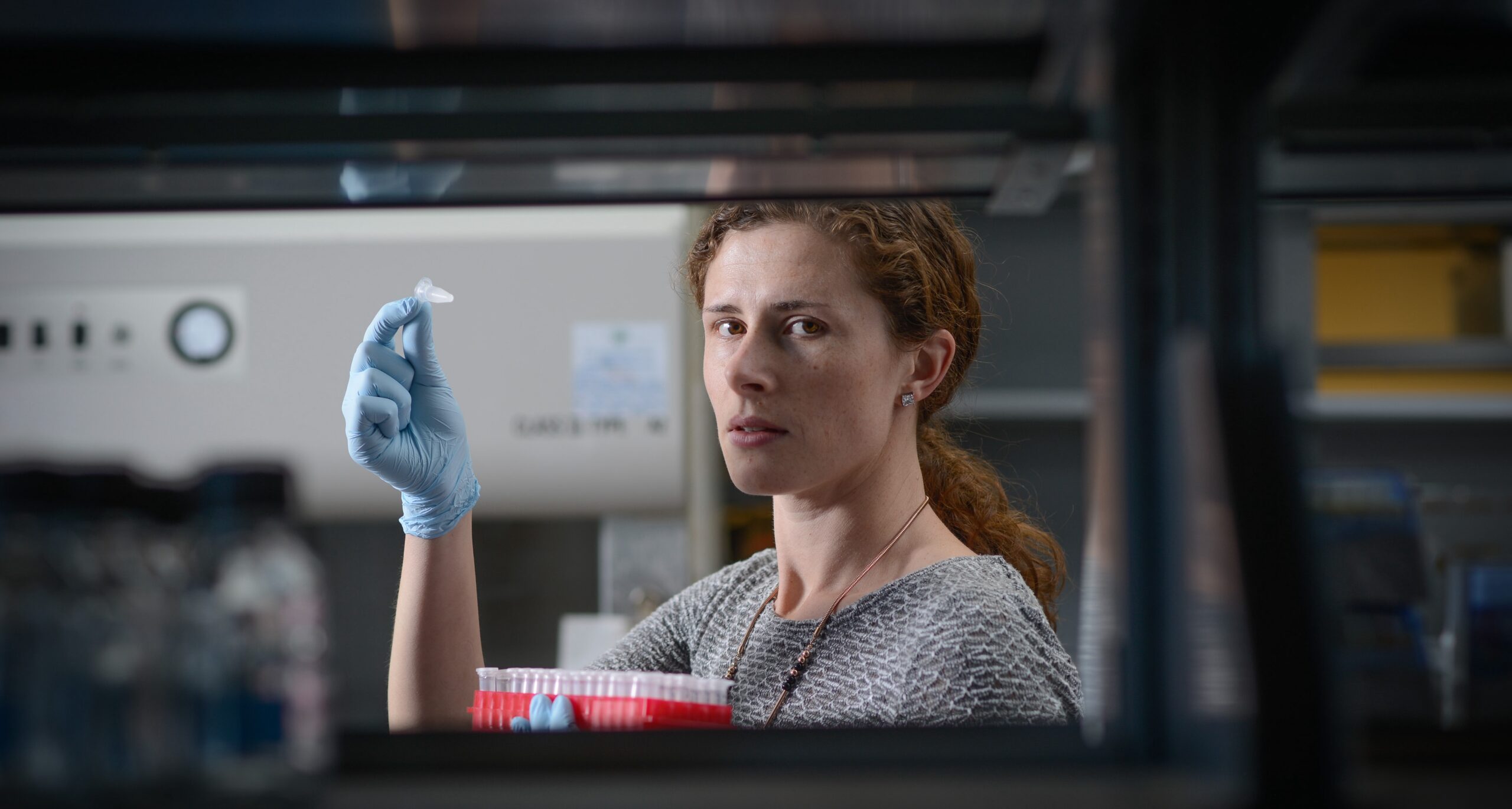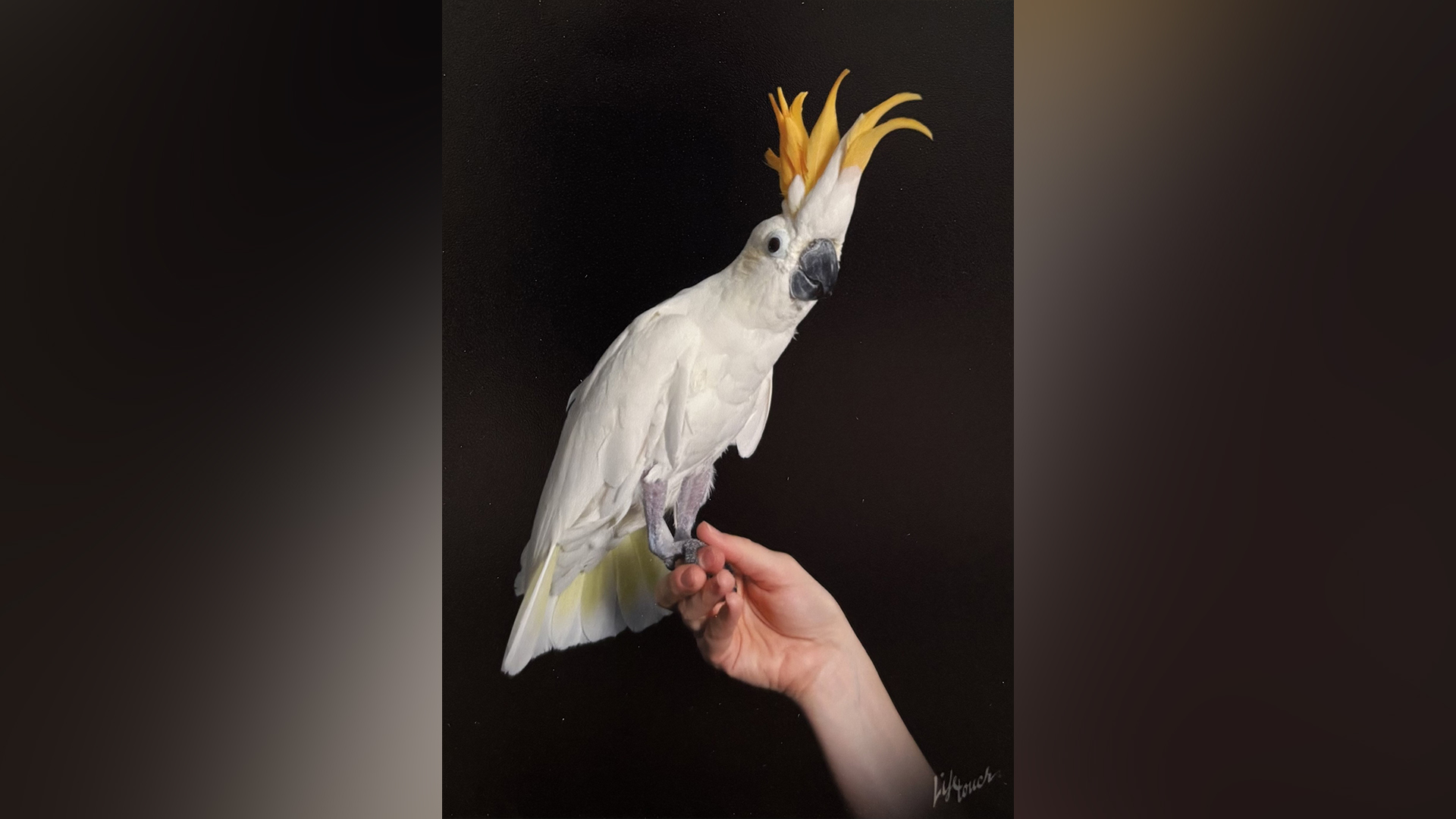Patient Spotlight: Semper Fi-do, Marine K-9 Recovers from Injury During Training
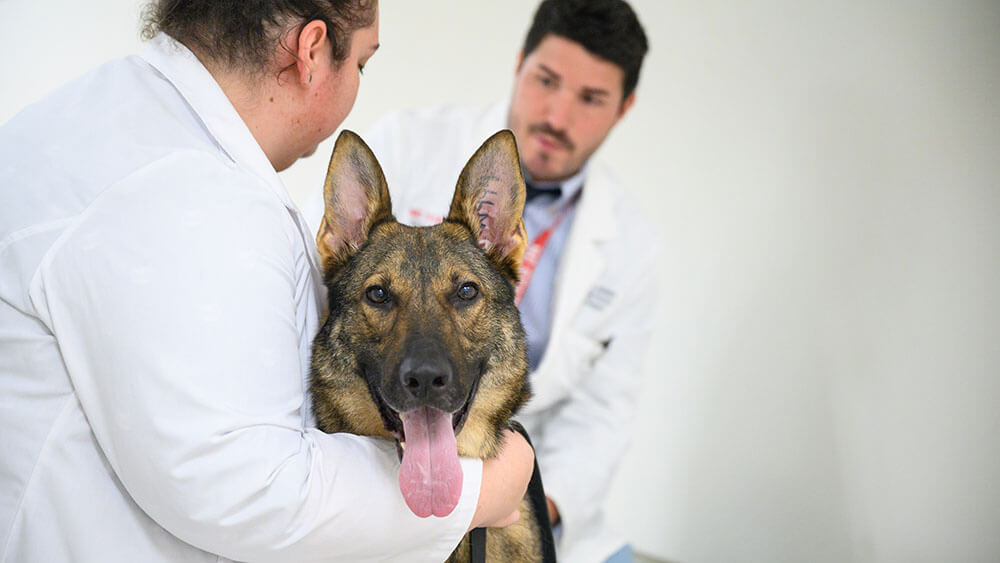
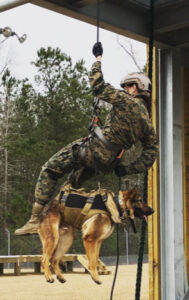
When military dog Frodo jumped out of a third-story window during a training exercise, his handler, Sgt. Mercedes Roach knew it might be the end of his career in the Marines — or worse.
“Frodo is trained to jump over obstacles,” Roach said. “Our team was on the first floor, and he got confused when he was searching for suspects in the building. For some reason he thought the window was an object and jumped through when I called him.”
The team immediately ended the training exercise and rushed the 6-year-old German shepherd to the veterinarian on base at Camp Lejeune in Jacksonville, N.C. Frodo had shattered his left femur and hyperextended both of his wrists. Because of the complicated injuries, Frodo was referred to the NC State Veterinary Hospital’s orthopedic surgery service. “I was impressed by the people and the quality of care from the nurses to the surgeons,” Roach said. “Everyone I met was so professional, and I could tell they really cared about Frodo. I knew that he was getting the best care possible.”
During surgery, the orthopedics team placed an interlocking nail into the central cavity of Frodo’s femur. The upper and lower fragments of the fracture were secured to the nail with two bolts each. The rigidity of the nail prevents the femur from bending and the four lateral titanium bolts prevent both compression and rotation of the bone while it heals.
The team also placed a string-of-pearls plate along the outside of the bone, but below the skin and tissue, to stabilize the fracture fragments since Frodo was a working dog. The cylindrical sections of the plate look like pearls and are designed to contour to the shape of the bone above and below the fracture site. A bone graft was also taken from Frodo’s left shoulder and inserted into the fragmented area of the fracture to help his femoral bone jump-start the healing process. Since Frodo’s implants take all of the weight-bearing force while he heals, his bone forms a callus around them and they do not need to be removed.
Temporary external splints and bandages were then placed over both of Frodo’s wrists to prevent further hyperextension or unnatural movement of the joint. During a fall, limbs absorb the impact, which can cause tendons and ligaments to break down and stop supporting the joint properly. In a separate procedure, his fused wrist bones were both stabilized using another bone graft to prevent pain during weight-bearing activities and long-term instability.
Following his surgery, Frodo was prescribed two to three months of crate rest while his bones healed. Bones take a minimum of eight weeks to fully heal, but Frodo’s injury could take up to a year for the bones to restore their normal anatomy.
“So far, his recovery is going great,” Roach said. “There’s no slowing him down. He’s up and walking, but still no jumping yet.”
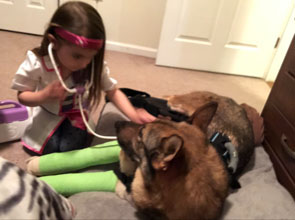
During his recovery, Frodo retired from the military and was adopted by Roach and her family. Frodo served four years on active duty with Roach, who was his only handler. He was trained in explosive detection, biting, patrol and finding people in the woods and buildings. He served on 13 military missions, including working with the Secret Service where he completed explosive searches for the president, vice president and first lady during the Obama and Trump administrations. His main duties included patrol and routine searches at Camp Lejeune.
As a retired K-9, Frodo’s new favorite activities are spending the day with Roach’s daughter, sleeping on the couch and going for car rides. To learn more about the orthopedic surgery service, visit their web page.
~Brittany Sweeney/NC State Veterinary Medicine
- Categories:
